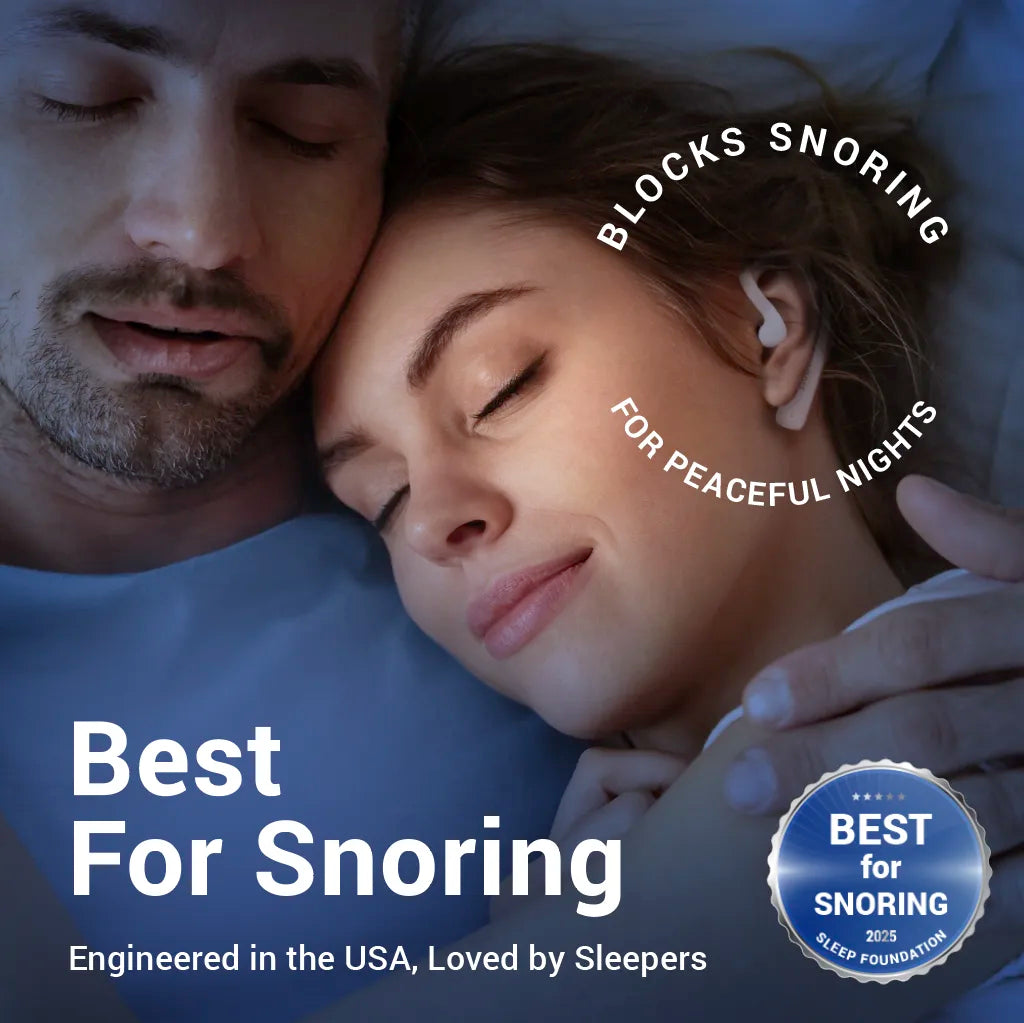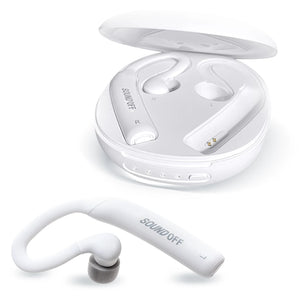
Introduction
Half of the population will snore at one time or another during their life.
That means the chances of you sleeping in the same room with a person who is snoring are very high. And if you're here, chances are high you are experiencing that right now.
This kind of disruption leads to a very low quality of sleep and that can negatively affect daily life in numerous ways.
One way to get a better night's sleep is to implement some sleep aid noises at night. There are two main types of noise used to improve sleep quality: white and pink. But which is better?
We're here to give you all the details; white noise and pink noise.
A Few Sound Basics
Before we get into the specifics of white noise and pink noise sounds, let's go back to the basics and make sure we understand all of the parts of sound.
Sound is how the body processes the vibrations all around us. We measure differences in sound in a variety of ways but some include frequency, octaves, and intensity. Each of these work together to create all of the different sounds we hear each day.
Frequency is the number of times a pattern repeats in a certain timeframe. Octave is the difference between pitches and changes in frequency. Intensity is the power of the sound wave.
Now that we understand how vibrations can make different sounds, let's talk about white noise and pink noise and how they affect our sleep habits.
What is White Noise?
White noise is the most commonly known type of noise sleep aid. That term includes basically any sound that has a consistent intensity.
White noise sounds are often found in the background and are continual without changing. Some common examples of background noise with equal intensity are whirring fans, radio or television static or the humming of a machine. A white noise sound creates ambient noise.
This type of sound was given its name because it is similar to white light in that they both are combinations of all the different wavelengths.
So since the white noise spectrum holds all the different audible frequencies at the same energy levels, the sound has the ability to drown out other sounds the human ear can perceive. It's as if the brain latches onto the rhythmic, repetitive nature and ignores the rest. You will be able to get into a dep sleep, and will have more energy the next day.
What is Pink Noise?
Pink noise, on the other hand, has a very different makeup than white noise. Instead of being about lower or higher frequencies, pink noise is about octaves. Each octave has a consistent intensity.
This type of sound is more commonly found in nature. Some common examples would be rain, ocean waves, low roaring strong waterfalls or wind in the trees.
The pink noise works very similarly to white noise in that it helps you to drown out the unwanted sounds around you for more restful sleep. Though it has been seen to work better because the sounds are smoother than white noise. If you are often experiencing restless nights, this type of sound masking noise may help you fall asleep faster and get a good night's rest.
White Noise Vs Pink Noise?
With this very basic information about white noise signal and pink noise, it may seem as if they are the same thing. Both types of noises block out intruding, disruptive random noise, like the barking dogs, garbage truck or a cupboard slamming. When these sounds are present, the brain doesn't notice the intruding noises and can sleep better, which may also lead to concomitant memory improvement.
Each has shown that they are an effective way to help people fall asleep and sometimes sleep longer or better.
But just because pink and white noise do the same job does not mean they have equal power.
Since the two different types of sounds are made up of different parts of sound, the body does not react the same to both.
Studies are showing that pink noise is the more soothing option and, therefore, leads to better quality sleep.
This is attributed partly to the fact that the types of sounds used in pink noise are more commonly found in nature which can have a calming effect and induce stable sleep.
There are new reports showing early research that continuous exposure to white noise may have negative effects on the brain activity and auditory system. Though there is no definitive answers on this yet.
Which Works Better For You?
This is the big question. Which noise is better for you and will really help you sleep longer, deeper, and better: white noise or pink noise?
Because of the nature of white noise, it can often have a high pitch whining component to it that might not be the most soothing for some ears. This is why often pink noise is found to be more effective to cure sleep disorders.
Many find that the calming tones of the more natural sounds pink noise consists of are easier for people to accept because it's not quite so foreign. This is already calming before the person is even trying to sleep.
Then when the brain and body are trying to sleep, they can fall into it quicker and also more deeply.
Research has shown that playing pink noise can reduce brain waves which is the cause of the more restful sleep people experience.
Where Can You Find Pink Noise?
There are a variety of ways that you can introduce pink noise into your bedtime routine; through sound machines, apps, and even specialized headphones.
All of these different sound systems deliver the noise to the consumer while they are sleeping but one method may work better than others depending on a variety of circumstances. You may need to do a little experimenting with pink noise machines to find the best option for you.
Find the Best Sleep
In the great white noise vs pink noise debate, they both offer a solution for better sleep but pink noise is a clear winner.
Those who use pink noise as a way to improve their sleep schedule commonly find that they experience a calm night where they are not awakened by outside disturbances. They are able to fall asleep quickly and then stay asleep longer. They wake up rested and ready for the new day.
If you are looking to experience that kind of restful, restorative sleep check out our blog for more tips and options for introducing pink noise into your routine.



































